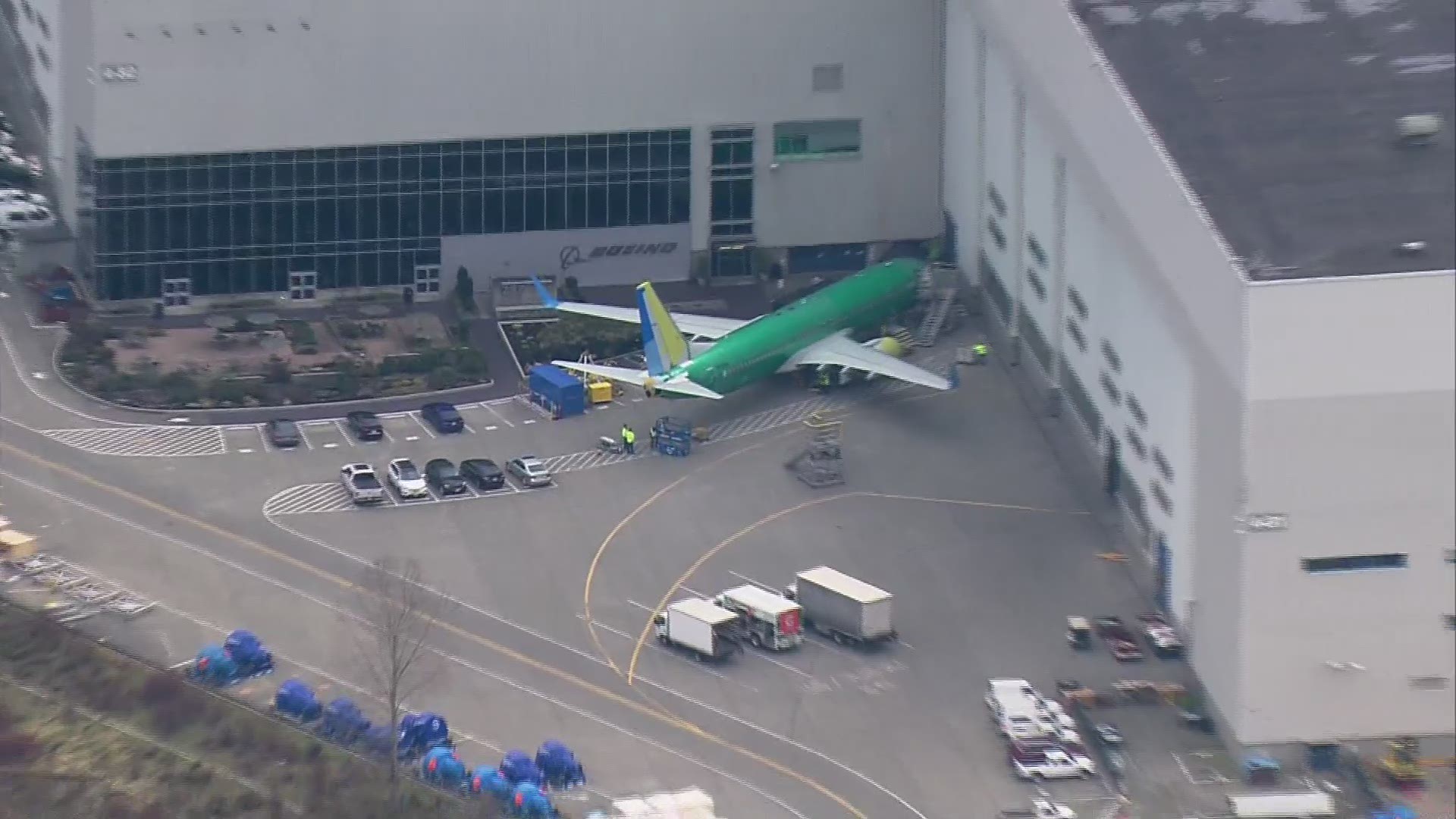In the wake of a second deadly crash involving a Boeing 737 MAX 8 Series plane, Boeing's CEO said Monday the company stands by the safety of their products, especially the 737 MAX.
Chairman, president and CEO Dennis Muilenburg wrote in a message to all employees that it "was with a heavy heart" that he learned of the loss of Ethiopian Airlines Flight 302.
The flight crashed Sunday shortly after takeoff from the Ethiopian capital of Addis Ababa, killing all 157 people aboard.
"I know this tragedy is especially challenging coming only months after the loss of Lion Air Flight 610," Muilenburg's statement read in part. "While difficult, I encourage everyone to stay focused on the important work we do."
Muilenburg explained that the company has delivered more than 370 737 Max airplanes to 47 customers and that the aircraft has completed hundreds of thousands of flights safely since its introduction.
“As we partner with regulators and the Ethiopian Airlines investigation unfolds, it’s necessary that we stay centered on the facts and avoid speculation,” he said.
The crash was similar to that of a Lion Air jet, of the same Boeing model, in Indonesian seas last year, killing 189 people. The crash was likely to renew questions about the 737 Max 8, the newest version of Boeing’s single-aisle airliner, which was first introduced in 1967 and has become the world’s most common passenger jet.
On Monday afternoon, the Federal Aviation Administration issued a “Continued Airworthiness Notification to the International Community.” In it, the U.S. aviation regulatory body said there was nothing yet to draw similarities between the crash of Lion Air Flight 610 last October to this past weekend's crash of the Ethiopian jet.
The FAA also updated what it’s doing since issuing an Airworthiness Directive involving a system newly developed for the 737 MAX on November 7. That system is called MCAS, for the Maneuvering Characteristics Augmentation System.
The FAA said Boeing has completed in-flight control system enhancements, which reduces pilots reliance on their memories to do certain things to turn the system off. Also, there are design changes including how the MCAS is activated, how the 'angle of attack' signal can be made more reliable, and limits what MCAS can do.
The concern is that the MCAS can repeatedly force the plane’s nose down. Boeing is also updating training requirements and flight crew manuals. Right now the FAA says the registered U.S. fleet is 74 jets.
In a statement released Monday evening, Boeing said it’s been working closely with the FAA “on development, planning and certification of the software enhancement that will be deployed across the 737 MAX fleet in the coming weeks.”
Boeing said the update includes customer feedback. Boeing said it’s team of technical advisors has arrived at the Ethiopian crash site.
Full statement from Boeing:
The Boeing Company is deeply saddened by the loss of Lion Air Flight 610, which has have weighed heavily on the entire Boeing team, and we extend our heartfelt condolences and sympathies to the families and loved ones of those onboard.
Safety is a core value for everyone at Boeing and the safety of our airplanes, our customers’ passengers and their crews is always our top priority. The 737 MAX is a safe airplane that was designed, built and supported by our skilled employees who approach their work with the utmost integrity.
For the past several months and in the aftermath of Lion Air Flight 610, Boeing has been developing a flight control software enhancement for the 737 MAX, designed to make an already safe aircraft even safer. This includes updates to the Maneuvering Characteristics Augmentation System (MCAS) flight control law, pilot displays, operation manuals and crew training. The enhanced flight control law incorporates angle of attack (AOA) inputs, limits stabilizer trim commands in response to an erroneous angle of attack reading, and provides a limit to the stabilizer command in order to retain elevator authority.
Boeing has been working closely with the Federal Aviation Administration (FAA) on development, planning and certification of the software enhancement, and it will be deployed across the 737 MAX fleet in the coming weeks. The update also incorporates feedback received from our customers.
The FAA says it anticipates mandating this software enhancement with an Airworthiness Directive (AD) no later than April. We have worked with the FAA in development of this software enhancement.
It is important to note that the FAA is not mandating any further action at this time, and the required actions in AD2018-23.5 continue to be appropriate.
A pitch augmentation control law (MCAS) was implemented on the 737 MAX to improve aircraft handling characteristics and decrease pitch-up tendency at elevated angles of attack. It was put through flight testing as part of the certification process prior to the airplane entering service. MCAS does not control the airplane in normal flight; it improves the behavior of the airplane in a non-normal part of the operating envelope.
Boeing’s 737 MAX Flight Crew Operations Manual (FCOM) already outlines an existing procedure to safely handle the unlikely event of erroneous data coming from an angle of attack (AOA) sensor. The pilot will always be able to override the flight control law using electric trim or manual trim. In addition, it can be controlled through the use of the existing runaway stabilizer procedure as reinforced in the Operations Manual Bulletin (OMB) issued on Nov. 6, 2018.
Additionally, we would like to express our deepest condolences to those who lost loved ones on Ethiopian Airlines Flight 302. A Boeing technical team is at the crash site to provide technical assistance under the direction of the Ethiopia Accident Investigation Bureau and U.S. National Transportation Safety Board. It is still early in the investigation, as we seek to understand the cause of the accident.


